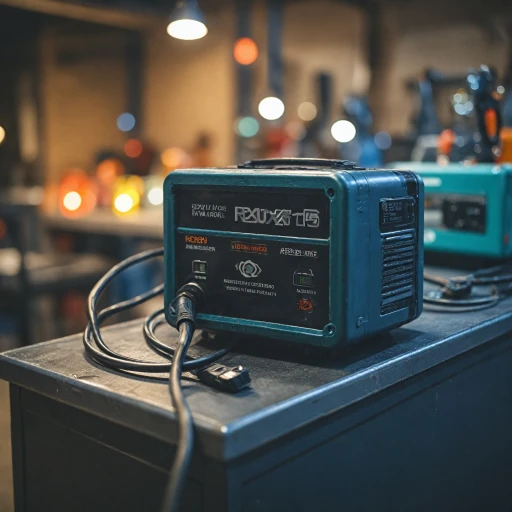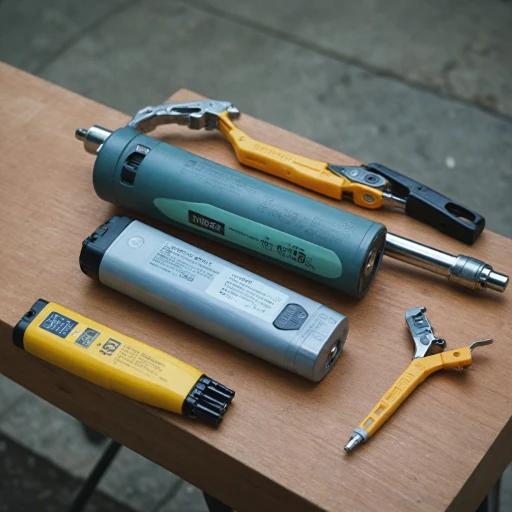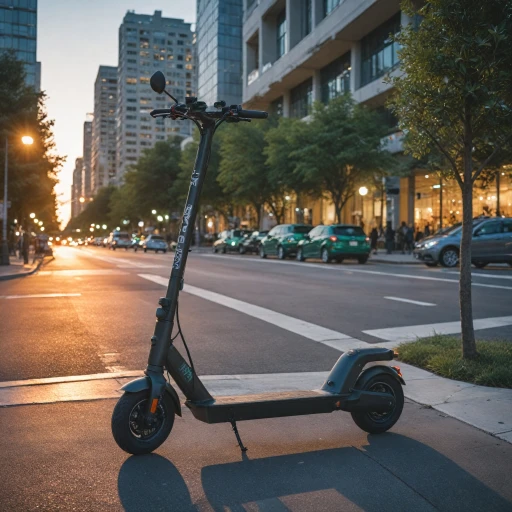Signs Your Electric Scooter Battery Needs Replacement
Recognizing the Need for Scooter Battery Replacement
Spotting when your electric scooter battery requires replacement is crucial for maintaining efficient performance and ensuring rider safety. Like any electronic device, over time, your scooter battery may show signs of decline. Knowing these symptoms can help you decide when it's time for a replacement.- Reduced Power and Performance: If you notice your electric scooter struggling during rides with a significant drop in power and speed, this is often a sign that the battery is losing its capacity. A sluggish scooter can indicate the battery doesn't hold charge as effectively as before.
- Frequent Charging: An increase in the frequency of charging suggests the battery no longer maintains extended use. If your scooter needs charging much sooner than it used to, consider looking into a replacement battery.
- Failure to Reach Full Charge: Persistent issues with the battery not reaching full charge levels despite long hours on the charger is a red flag. Such scenarios often necessitate immediate battery replacement.
- Overheating: During use or while charging, if your battery consistently overheats, it may be on the verge of failure. High temperatures can worsen the condition, so replacing it promptly is advised.
Choosing the Right Battery for Your Electric Scooter
Picking the Perfect Power Source for Your Scooter
Choosing the right battery for your electric scooter is a critical decision that impacts the performance and longevity of your ride. For starters, consider the type of battery your scooter uses. Most modern electric scooters rely on lithium-ion batteries, known for their high energy density and long life. However, some models may still use lead-acid options, which are cheaper but heavier and less efficient. Another vital factor to consider is the voltage requirement. The majority of scooters operate on 24-volt systems, but you'll find others running on 36 or even 48 volts. Ensuring you select a battery that matches your scooter's voltage is crucial for safety and proper functioning. For those unsure about wiring and technical specifics, you might find this guide on wiring a 24v battery for your electric scooter useful. Moreover, scrutinize the battery size and capacity, often measured in amp-hours (Ah). A higher Ah rating indicates more power storage, which translates to a longer ride between charges. Be mindful of physical dimensions as well; ensure your new battery fits within the designated compartment of your electric scooter. When considering price, remember that investing in a quality replacement battery with a solid warranty can save money in the long run. Battery replacement mileage varies, but top-performers like the Razor electric scooter series are known for reliable performance and favorable user ratings. Checking customer reviews can help gauge satisfaction and durability, potentially guiding your choice towards highly-rated options. Lastly, consider additional features such as fast charging capabilities and compatibility with universal chargers. This allows for flexibility and added convenience, especially if you frequently travel or rely on your scooter for mobility needs. By paying attention to these aspects, you can enhance both the performance and reliability of your electric scooter.Step-by-Step Guide to Replacing Your Scooter Battery
Preparing for Battery Replacement: A Comprehensive Guide
Replacing your electric scooter battery can initially seem like a daunting task, but with the right tools and steps, it becomes much more manageable. Proper preparation is key, so ensure you have everything you need before diving into the process.
Gather Your Tools & Supplies
Before starting, gather essential tools for the battery replacement. You'll typically need:
- A screwdriver set for unscrewing the battery compartment.
- Insulated gloves for safety.
- A new replacement battery, suitable for your scooter model.
- The appropriate charger for the new battery (if the voltage differs from the old one).
Having all tools on hand helps streamline the process, minimizing interruptions as you work on your electric scooter.
Step-by-Step Replacement Instructions
1. Ensure Safety First: Turn off your scooter and disconnect the power source. Safety should always be your priority, especially when handling electric components.
2. Access the Battery Compartment: Depending on your electric scooter model, locate and unscrew the battery compartment using your screwdriver set. Carefully remove the cover to expose the battery.
3. Disconnect Old Battery: Inspect the connectors holding your old battery and gently disconnect the wires. It’s important to remember the layout for reconnecting the new battery correctly.
4. Remove the Old Battery: With connectors detached, carefully remove the old battery from the compartment. Handle the battery with care to avoid damage or leakage.
5. Install the New Battery: Position your new battery in the compartment, ensuring it fits snugly in place. Reattach the connectors to the new battery, matching the previous layout to ensure everything connects properly.
6. Secure the Compartment: Refit the cover, ensuring all screws are securely tightened. This prevents any potential damage from loose components while you're on the move.
For details on choosing the right battery for your electric scooter, consider the benefits of EcoSmart batteries, offering efficient power options for various models.
Test the New Battery
Once installed, power on your scooter to ensure everything functions correctly. Listen for any unusual sounds and monitor the performance to confirm the replacement was successful.
To further enhance your ride after battery replacement, consider exploring some essential accessories that complement your scooter.
Maximizing Battery Life After Replacement
Boosting the Efficiency of Your New Battery
Once you’ve gone through the electric scooter battery replacement process, it’s crucial to focus on steps to ensure maximum efficiency and longevity. Proper care and maintenance of your new battery will not only save you money but also enhance the performance of your electric bike or scooter.
- Regular Charging: Avoid letting your scooter battery drain completely. Regularly charging your lithium or SLA batteries helps maintain their health. Most batteries operate efficiently between 20% and 80% charge levels.
- Avoid Overcharging: Once your battery reaches the optimal voltage—usually indicated by your charger—it's best to disconnect it from the power source. Continuously overcharging can degrade the battery’s capacity and life over time.
- Storage Conditions: Ensure that razor electric or mobility scooter batteries are stored in a cool, dry place. Extreme heat can reduce battery life, while cold conditions might affect performance temporarily.
- Inspect for Damage: Regular checks for any visible damage like swelling or leakage are essential. Damaged scooter batteries can be a safety hazard and may require immediate replacement.
- Ride in Power-Saving Modes: Many electric scooters and bikes offer eco modes that reduce power draw. Switching to these modes, especially for short commutes, can extend the life of your batteries.
Implement these steps and enjoy better performance and longevity of your replacement battery. Understanding and responding to your battery's needs can be a straightforward path to keeping your electric scooters running at their high potential without frequent repairs or replacements.
Understanding Battery Specifications and Compatibility
Grasping Battery Details and Suitability
When considering a battery replacement for your electric scooter, it's crucial to have a solid understanding of the battery specifications and compatibility. This not only ensures optimal performance but can also help avoid damages that may occur from using inappropriate battery options.
Here are some key elements to focus on:
- Voltage Requirements: Most electric scooters, including popular brands like Razor and Izip, operate on batteries with a specific voltage. Common values include 24V, 36V, or 48V. Replacing the battery requires matching this power standard to maintain vehicle efficiency and effectiveness.
- Battery Type: Electric scooter batteries come in various forms such as lithium-ion, SLA (Sealed Lead Acid), or lithium-polymer. Each type has pros and cons affecting price, weight, and longevity. For instance, lithium versions are lightweight and tend to have a longer lifespan compared to SLA.
- Size and Fit: Ensuring that the replacement battery physically fits into your scooter’s battery compartment is critical. Check the manufacturer's specifications regarding battery dimensions to avoid any fitment issues. This consideration includes not just size but also connectors and wiring.
- Brand and Quality: Original replacement batteries from reliable manufacturers come with a warranty and often include features like a high capacity or extended cycle life. It's worth considering these factors when evaluating options for your mobility scooter or electric bike battery needs.
Considering all these specifications and compatibility factors will guide you towards making an informed and effective choice for your scooter bike. Avoiding common pitfalls in battery replacements will ensure that your electric scooters and bikes remain as reliable as possible, serving you well in the long run.
Common Mistakes to Avoid During Battery Replacement
Avoiding Missteps During the Battery Change Process
When engaging in scooter battery replacement, it's pivotal to ensure your process isn't plagued by common mistakes. Proper diligence can enhance the longevity and performance of your electric scooter. Here are some pitfalls to be aware of:- Ignoring Compatibility: One major issue is not verifying the compatibility of new batteries with your scooter model. Always confirm size, volt, and type (such as lithium or SLA) match your scooter's requirements.
- Overlooking Warranty Details: Sometimes users overlook checking the replacement battery's warranty. A reliable warranty ensures peace of mind and can save you from additional expenses leading to high scooter price.
- Skipping the Manual: The scooter’s manual includes specific instructions regarding electric replacement. Ignoring these can lead to installation errors and potential damage to the bike.
- Failing to Purchase Reputable Brands: The market offers a variety of scooter batteries, but not all meet quality standards. Opt for reputable brands to avoid the need for another replacement shortly after purchase.
- Not Considering Power Needs: Scooters, like razor electric or mobility scooters, have different power needs. Select a battery that meets high demand power requirements to ensure your scooter's performance isn't compromised.
- Neglecting Proper Removal and Installation Techniques: Careless removal and incorrect installation can lead to damage or reduced battery life. Refer back to the comprehensive guide on replacing your scooter battery to prevent errors in this step.






